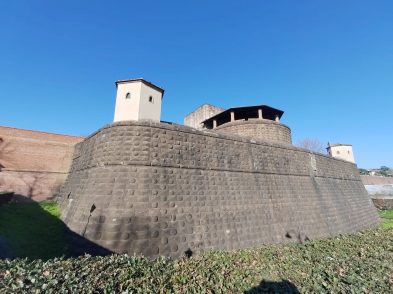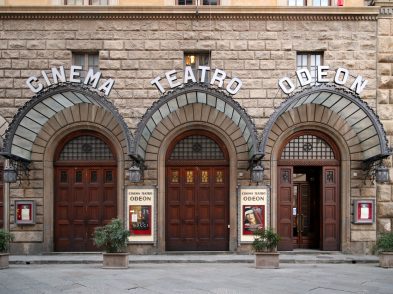On November 4, 1966, as the flood waters lapped about the base of his statue, almost reaching his slippered toes, the poet, writer and politician Dante Alighieri, considered the father of the Italian language, looked gloomily down from its pedestal in the middle of Piazza Santa Croce, where he then stood. It was almost as though he were witnessing something from the Inferno (?Hell’) he had so eloquently depicted in his masterpiece, La Divina Commedia, one of the most important works ever written in Florentine vernacular, the language of the common people, today a classic in world literature.
In 1865, to celebrate the sixth century of Dante’s birth, sculptor Enrico Pazzi generously donated, but not without an element of self-interest, that white Carrara marble statue of Dante to Florence, Italy’s new capital. He represented his subject deep in thought, clasping his robes around him and wearing on his head the symbolic laurel wreath of the poet laureate. Pazzi put an eagle at his feet and decorated the four corners of the plinth on which the statue stands with four heraldic lions. Each lion, signifying the power of the people during the Republic of Florence, is sitting and resting one paw on the city’s coat of arms. On May 14 of that year, Vittorio Emanuele II, the king of the recently unified nation, unveiled the sculpture with great pomp and ceremony.
It was moved to the steps of the Basilica of Santa Croce in 1968 so that the traditional annual football in costume matches could be played in the piazza. This year, to celebrate the 150th anniversary of the Unification of Italy, the statue will undergo restoration estimated to cost almost 50,000 euro.
The sculptor and his subject are united by a strange quirk of circumstance: Dante, who was born in Florence in late May or early June 1265, died in exile in Ravenna on September 14, 1321; Pazzi was born in Ravenna on June 20, 1818, and died in Florence on March 27, 1899. Growing up in that small town on the Adriatic coast, Pazzi studied at his local art academy until, in 1845, he won a three-year scholarship to study in Florence under the renowned sculptor Giovanni Dupr? (1817-1882). He soon became a prolific artist, and his works include another Florentine statue, that of Girolamo Savonarola (1872), originally placed in the Salone dei Cinquecento of Palazzo Vecchio until it was transferred to Piazza Savanarola in 1921, and the bronze equestrian statue of Prince Michele Obrenovitsch of Serbia (1883) in Belgrade.
For centuries, relations between Ravenna and Florence have been strained over Dante’s final resting place. Florence continually asked that his remains be returned to his birthplace, but Ravenna refused. Unexpectedly, in 1865, a box found in a hole between the Rasponi and Braccioforte chapels in Ravenna was surmised to hold Dante’s bones, long hidden. It was placed on a small carpet, and when the box was opened, dust fell onto it. Pazzi, believing this dust was mixed with the poet’s bones, swept it up, put it into six envelopes and, in 1889, gave his ?find’ to the director of the National Library in Florence. Rediscovered in the library in 1999, it was examined by experts who quickly concluded that the ash-like particles had nothing whatsoever to do with Dante.
However, on his death, Pazzi left not only a considerable fortune but also major art works, drawings, books and papers to the City Art Museum and to the National Museum of his home town, whose foundation he had vigorously promoted. He also left three endowments for young art students to study in Rome, Florence or Venice.
Undoubtedly, Dante’s legacy was a far greater and lasting one. In the same year that Pazzi presented his ?relics’ to the library, a group of intellectuals under the leadership of Giosu? Carducci set up the Dante Alighieri Society. Its purpose was ?to teach and promote the Italian language and culture throughout the world, nourishing the spiritual ties of citizens overseas with the Mother Country, and fostering love and appreciation among foreigners for Italian culture.’ The society now fulfills this objective through its network of 423 chapters spread across five continents, teaching 6,000 Italian-related courses to 220,000 students.
Alarmingly, the future of this prestigious cultural institution is in peril. Through the cuts implemented in the current Finance Act, government funding to the society will be slashed by 53.5 percent, putting it at risk for closure. Although fund-raising initiatives like the S.O.S for Italian crusade by the magazine Io Donna and the call for donations by the Movimento I Nuovi Italiani are in progress to prevent this happening, we all need to mobilise to save Dante’s heritage.







